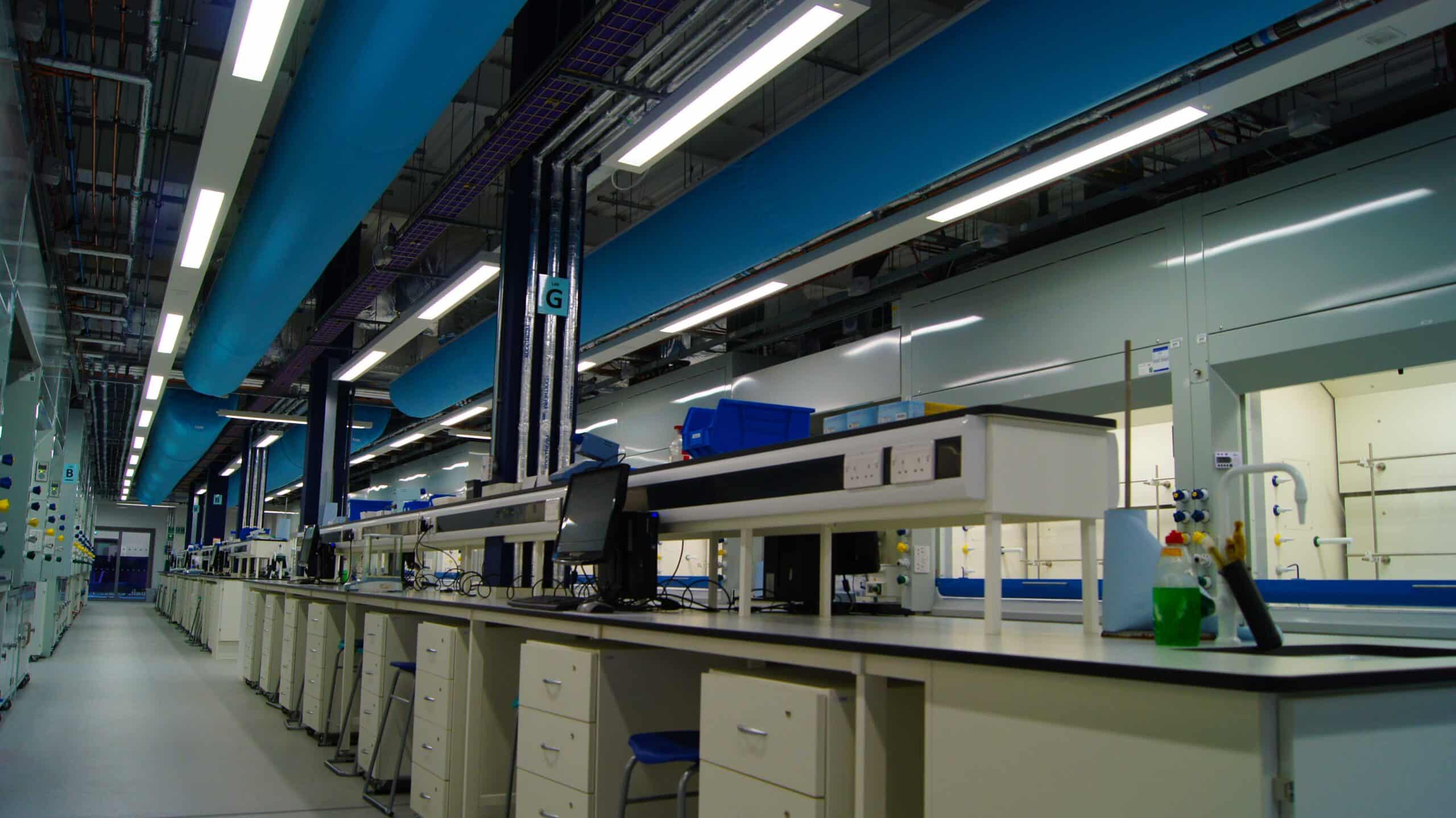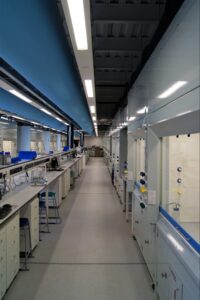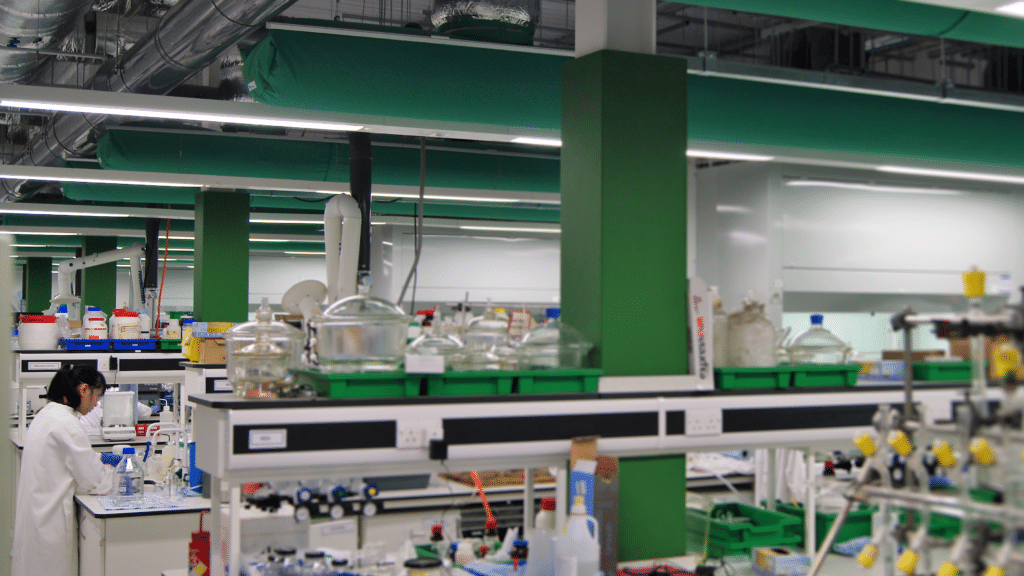Fume Cupboards And Lab Ventilation: The Case For Fabric Ducts


Lab ventilation requirements for fume cupboards
Lab ventilation – getting it right is a tricky affair. Laboratory equipment often requires specific atmospheric conditions to work as intended. Fumes and vapours must be kept safely away from occupants. Additionally, the overall ventilation system must provide a comfortable and safe working environment for the lab’s occupants.
Hazard containment is commonly achieved using fume cupboards (or ‘fume hoods’). They prevent the release of toxic fumes, gases and vapours from hazardous substances into the rest of the laboratory. There are several types, but they all draw air from the lab into the fume cupboard before exhausting it safely away. Most industrial fume cupboards are ducted and release the exhaust air outside.
 How do fume cupboards affect lab ventilation design?
How do fume cupboards affect lab ventilation design?
Fume cupboards require make-up air to operate correctly. They are only as effective as the surrounding ventilation allows them to be. That’s why maintaining adequate ventilation is so important.
Fume cupboards use a sash opening and sensors to detect how much air is flowing into the cupboard. As the air is exhausted from the lab, make-up air is supplied by the general HVAC system. This make-up air must have a low velocity near the fume cupboards. Otherwise, it can cause turbulent air which could potentially disrupt hazard containment by allowing air to flow out into the laboratory and its occupants. Fast air near the fume cupboards can also interfere with face velocity sensors and result in the faulty operation of the exhaust system.

Noise levels are also an important consideration. For safety reasons, noise from ventilation must be kept to a minimum near fume cupboards to allow verbal communication. Too much noise can also affect the operation of sensitive lab equipment.
How can fabric ducts solve these problems?
A well-designed fabric duct system is the ideal solution to these issues. It can readily diffuse large volumes of air at very low velocities, directing it towards or away from any specific zones in the laboratory.
With fabric ducts, there is no need for acoustic insulation. Since every design is bespoke, we can take into account particular noise requirements at the design stage of the ductwork. By fine-tuning the combination of material choice, layout and diffuser options, we can achieve very quiet air supply, even with high volumes of air.
Prihoda fabric ducts are ideal for use in laboratory ventilation. Fabric ducts allow very flexible layouts adapted to the exact ventilation requirements of the lab. They can act as diffusers and ducts all in one and, unlike steel ducts, they aren’t limited to standard sizes. This makes it easy to avoid placing them near sensitive equipment while still maintaining perfect laboratory ventilation.
Please contact us to discuss your requirements. We provide fabric duct services from design to installation and maintenance.
Looking for more information?
Our experts are on hand to answer any questions. Why not give us a call or drop us a message, We’ll work with you to find the right solution.
Contact us
 How do fume cupboards affect lab ventilation design?
How do fume cupboards affect lab ventilation design?

